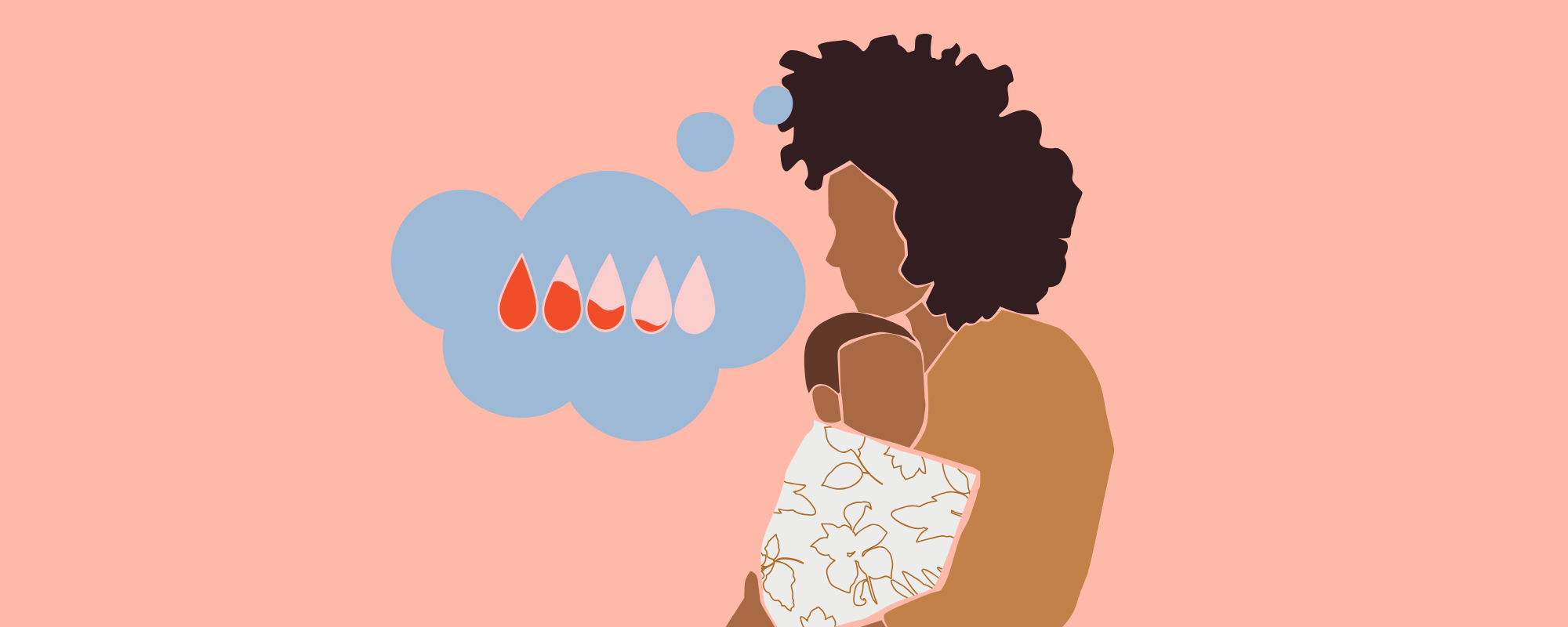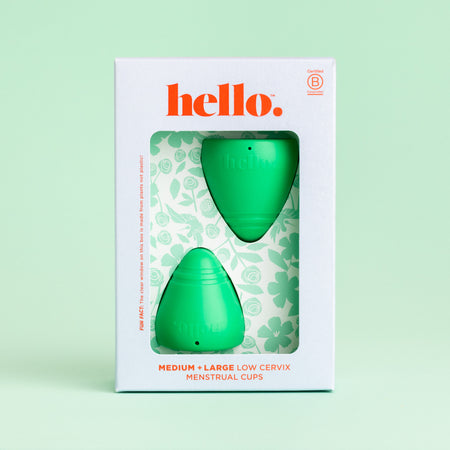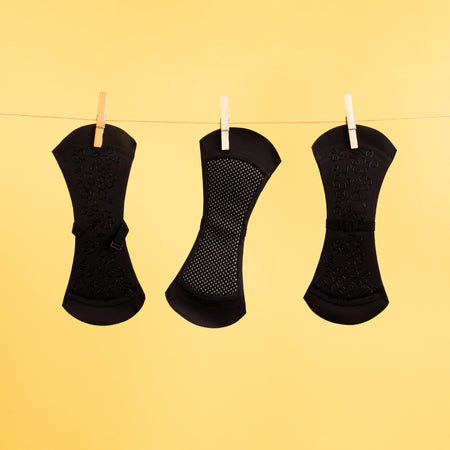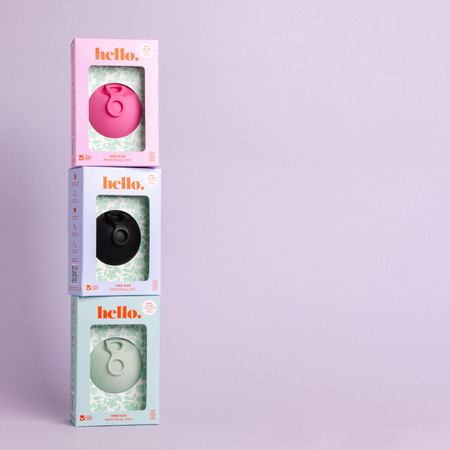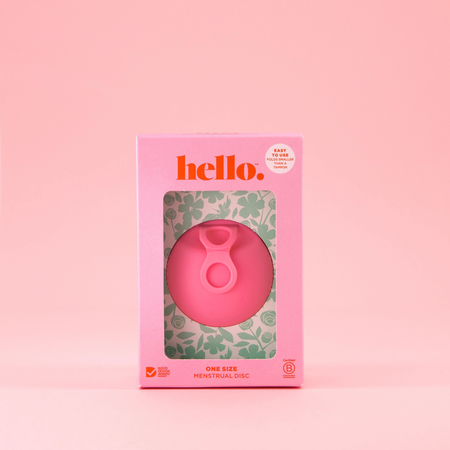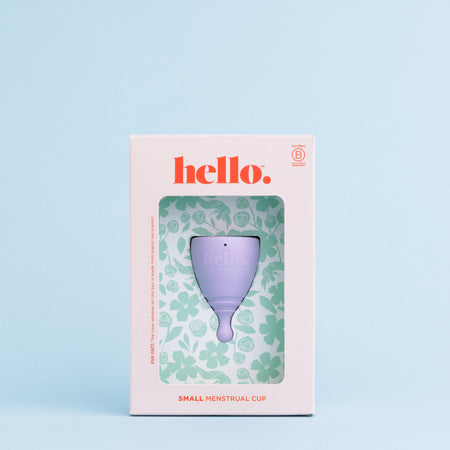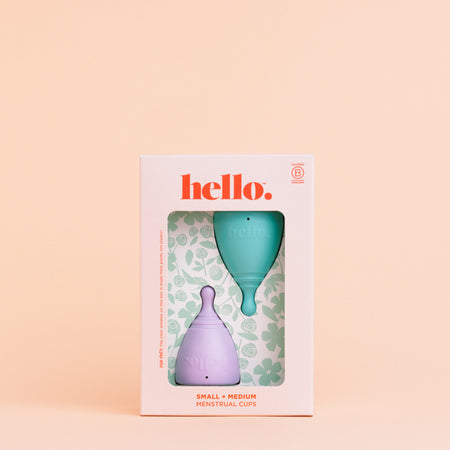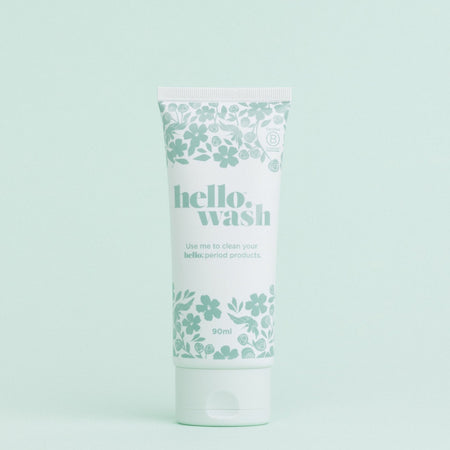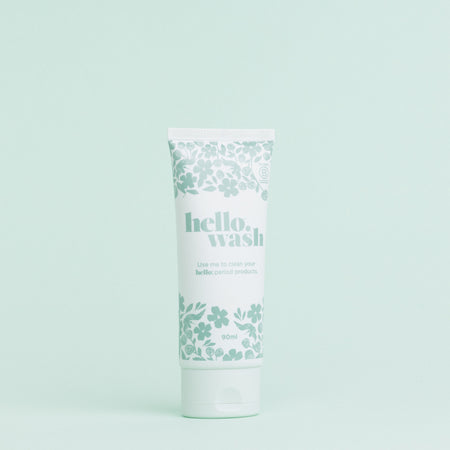Periods come with all sorts of quirks, don’t they? While some are easy to manage (hello, chocolate cravings), others can be downright uncomfortable, like PMS. Premenstrual Syndrome (PMS) reminds us that our bodies are always busy, even when it doesn’t seem like it. But don’t worry—we’re here to demystify x and help you figure out how to manage it, so you can feel more like yourself throughout your cycle.
From what PMS is to how it can show up, what causes it, and what you can do to ease those pesky symptoms, here’s everything you need to know. Plus, we’ll share how Hello Period can help make that time of the month a little more comfortable.
What is PMS?
PMS refers to the combination of symptoms that many people experience in the lead-up to their period. It pops up during the luteal phase – aka the week or two after ovulation – as hormone levels like estrogen and progesterone begin to shift. Once your period starts and hormone levels stabilise, those symptoms usually disappear.
Research suggests that over 90% of menstruating folks report experiencing some form of PMS symptoms, whether that's mild mood swings or more uncomfortable physical symptoms. While PMS is super common, the effects can differ wildly from one person to the next. Factors like age, stress levels, and even family history can play a role in how you experience PMS.
Interestingly, PMS typically rears its head the most for people in their 30s or 40s, when hormone fluctuations can get a bit more unpredictable. Of course, understanding the ‘why’ can help with the ‘what next?’
Who gets PMS?
Anyone who menstruates can experience PMS symptoms, though it’s most common in people in their 30s. If you’ve got a history of depression in your family or deal with high levels of stress, you might feel PMS symptoms a bit more acutely than others.
Common PMS Symptoms
When Do PMS Symptoms Begin?
PMS symptoms usually make a grand entrance 1-2 weeks before your period begins (typically around ovulation) and vanish within a few days of menstruation starting. The specific timeline might vary depending on your cycle, but keeping track of your PMS symptoms each month can reveal helpful patterns.
Emotional and Behavioural Symptoms
The emotional challenges of PMS often get the spotlight – and for good reason. Hormonal shifts during this phase can stir up feelings you didn’t invite, from irritability to sadness, and just about everything in between. Some of the most common emotional and behavioural symptoms include:
-
Mood Swings – Feeling on top of the world one moment and downright irritable the next? Classic PMS.
-
Anxiety or Restlessness – A racing mind or heightened feelings of tension can be frequent visitors.
-
Crying Spells or Sadness – Yep, the feels are real – and totally valid.
-
Appetite Changes – Cravings for sweet or salty snacks (hello, chocolate) are rooted in biology.
-
Difficulty Sleeping – Whether it’s tossing, turning, or sleeping too much, sleep disruptions can come along for the ride.
Physical Signs and Symptoms
PMS isn’t just an emotional rollercoaster – it can stop by physically, too. These can range from mild discomfort to frustrating annoyances, such as:
-
Bloating and Gassiness – Your body’s not being ‘extra’ – it’s hormones at work.
-
Breast Tenderness – Swollen, tender breasts are a hallmark PMS symptom for many.
-
Headaches – For some, PMS worsens the frequency or intensity of migraines.
-
Cramps – While not technically period cramps, similar feelings can start during PMS.
-
Fatigue – Feeling unusually wiped out? Hormonal dips before your period could be the culprit.
Staying mindful of these symptoms as they occur each month can make it easier to manage them.
What Causes PMS?
Hormonal Changes
Hormonal fluctuations during the menstrual cycle, especially falling estrogen and progesterone levels after ovulation, are considered the main culprits behind PMS. These changes can trigger mood shifts, fatigue, or physical symptoms like bloating and cramps.
Brain Chemistry
Ever heard of serotonin? It’s the feel-good chemical in your brain that helps regulate mood. When estrogen dips, it disrupts serotonin production, which might explain the mood changes, sleep issues, and food cravings many face before their period.
Mental Health Conditions
People with conditions like depression or anxiety may notice symptoms worsen in the lead-up to menstruation. This overlap can make PMS a bit trickier to pinpoint, but it’s worth addressing with a professional if needed.
Lifestyle Factors
What you eat, how active you are, and even how much sleep you get can all influence how severe your premenstrual symptoms feel. For instance, high-stress levels, smoking, or eating too much salt and sugar may cause severe PMS symptoms.
What is the Difference Between PMS and PMDD?
Premenstrual dysphoric disorder (PMDD) is like PMS’s louder, angrier cousin. While PMS can be inconvenient or uncomfortable, PMDD can take those emotional and physical symptoms to debilitating levels.
With PMDD, you might notice severe mood swings, intense anxiety, or even depression that interrupts your daily life. For approximately 2-8% of people who menstruate, PMDD makes a significant impact, and medical intervention through medication, therapy, or both can help.
While PMS and PMDD share similarities, PMDD’s symptoms are far more severe and shouldn’t be brushed off. If you think this could be affecting you, it’s worth having a chat with a healthcare professional.
What You Can Try to Relieve PMS Symptoms
Everyone’s PMS cocktail is a bit different, so finding how to reduce pms symptoms might take experimentation. Here are some tried-and-true strategies:
-
Move Your Body – Exercise releases endorphins (those feel-good chemicals) and can reduce bloating and mood swings. Even a short walk daily can help.
-
Eat Well – Focus on whole foods like fruits, veggies, and whole grains. Cut back on salt, caffeine, and alcohol to ease bloating and irritability.
-
Regular Sleep – Aim for 7-9 hours of solid Zs. Lack of sleep can amplify mood swings and fatigue.
-
Stress Management – Whether it’s yoga, journaling, or a Netflix marathon, dedicate time to whatever helps you decompress.
-
Over-the-Counter Relief – Pain relievers like ibuprofen or heating pads can work wonders for cramps and headaches.
And of course, don’t be afraid to reach out for help. Over-the-counter pain relief and vitamins like calcium and magnesium have been shown to reduce PSM symptoms for some people.
Hello to Easier PMS Days
Wouldn’t it be amazing to turn your period week into something more manageable – maybe even empowering? That’s where Hello Period comes in. Our products, whether menstrual cups or period underwear, are designed to make dealing with your period (and PMS) easier, more comfortable, and way less stressful.
With Hello Period, you’re not just a customer but part of a community that’s rewriting how we talk about periods. No shame, no stigma – just top-notch products for real people.
Check out Hello Period’s range and make your next cycle a little brighter.
Experience a Stress-Free PMS with Hello Period
Here’s the thing—periods are part of life, but they shouldn’t make you feel like you’re just “getting by” every month. By understanding your body and taking steps to manage PMS symptoms, you can reclaim that time of the month for yourself.
At Hello Period, we’re passionate about empowering you to feel great, no matter what your cycle brings. From expert tips to game-changing period products, we’ve got you covered. Check out our range and feel the difference today!
FAQs
1. How do you diagnose PMS?
Diagnosis typically involves tracking your symptoms (timing and severity) for at least three menstrual cycles. A healthcare provider will ensure your symptoms align with PMS and check for other conditions, like thyroid problems or anxiety.
2. What medications can treat PMS symptoms?
From NSAIDs for cramps to SSRIs for emotional symptoms, there’s a range of meds available. Hormonal birth control can be particularly helpful for balancing mood and physical discomfort. Always consult a doctor to find what’s best for you.
PMS doesn’t define you – and with the right tips and tools, it doesn’t have to dominate your month either. Start by taking small, proactive steps, and remember, you’ve got a whole community here to back you up.








